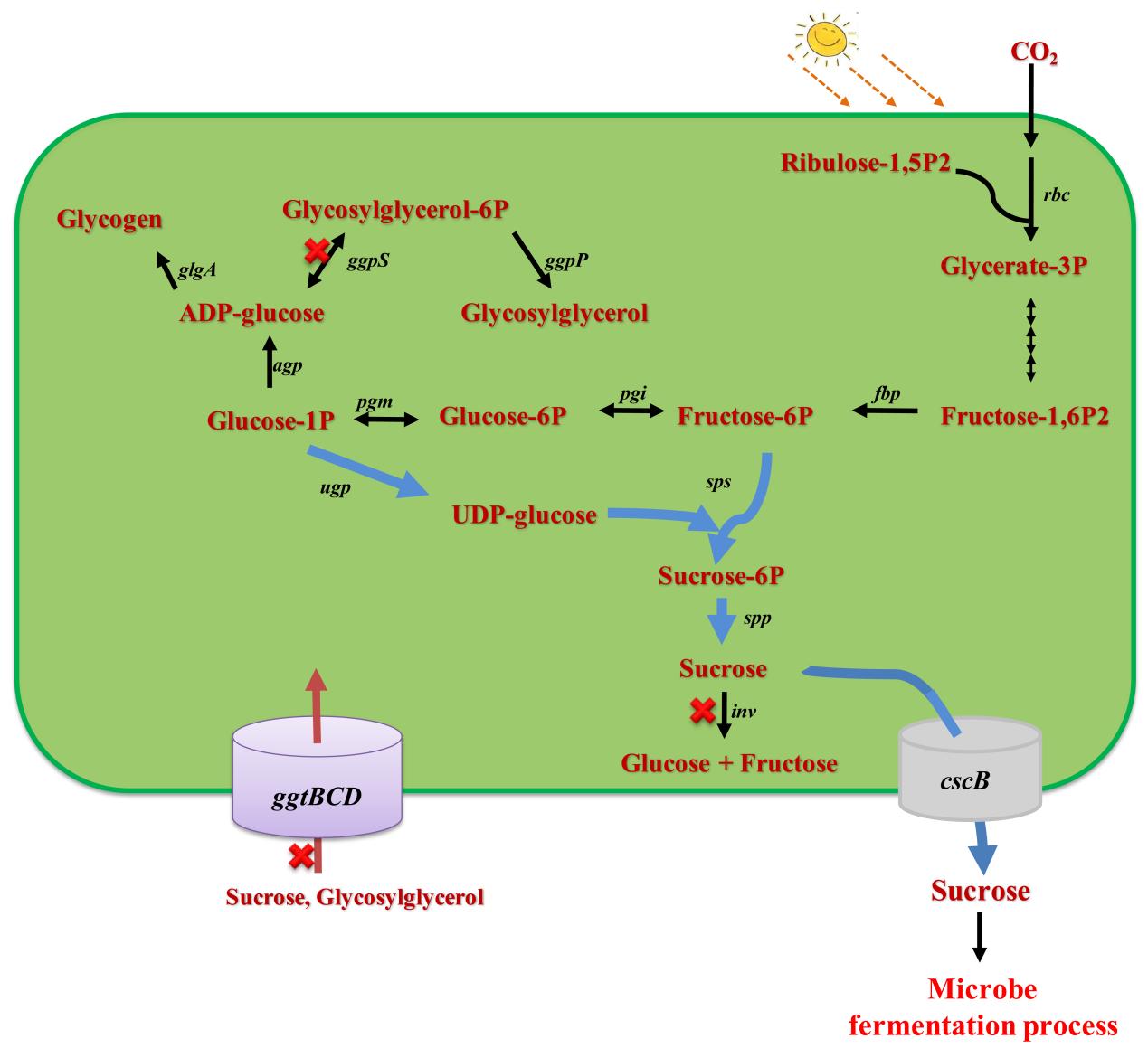Exploring the photosynthetic production capacity of sucrose by cyanobacteria
Because cyanobacteria are photosynthetic, fast-growing microorganisms that can accumulate sucrose under salt stress, they have a potential application as a sugar source for the biomass-derived production of renewable fuels and chemicals.
Researchers from Metabolic Engineering Group at Qingdao Institute of Bioenergy and Bioprocess Technology (QIBEBT), Chinese Academy of Sciences (CAS), have recently made progress on sucrose production by cyanobacteria.
The production of sucrose by the cyanobacteria Synechocystis sp. PCC6803, Synechococcus elongatus PCC7942, and Anabaena sp. PCC7120 was examined. The three species displayed different growth curves and intracellular sucrose accumulation rates in response to NaCl. Synechocystis sp. PCC6803 was used to examine the impact of modifying the metabolic pathway on the levels of sucrose production. The co-overexpression of sps (slr0045), spp (slr0953), and ugp (slr0207) lead to a 2-fold increase in intracellular sucrose accumulation, whereas knockout of ggpS (sll1566) resulted in a 1.5-fold increase in the production of this sugar. When combined, these genetic modifications resulted in a fourfold increase in intracellular sucrose accumulation.
To explore methods for optimizing the transport of the intracellular sucrose to the growth medium, the acid-wash technique and the CscB (sucrose permease)-dependent export method were evaluated using Synechocystis sp. PCC6803. Whereas the acid-wash technique proved to be effective, the CscB-dependent export method was not effective. Taken together, these results suggest that using genetic engineering, photosynthetic cyanobacteria can be optimized for efficient sucrose production.
This work entitled “Exploring the Photosynthetic Production Capacity of Sucrose by Cyanobacteria” has been online published in Metabolic Engineering. http://dx.doi.org/10.1016/j.ymben.2013.05.001
 |
|
Figure 1. Metabolic modifications of the biosynthetic pathway of sucrose inSynechocystissp. PCC6803. (Image by Metabolic Engineering Group at QIBEBT)
|
 |
| Figure 2. Schematic view of impact of both modifying the intracellular metabolic pathway on the levels of sucrose accumulation (left) and methods for optimizing the transport of the intracellular sucrose to the growth medium (right). (Image by Metabolic Engineering Group at QIBEBT) |
Contact:
Prof. LU Xuefeng
E-mail: lvxf@qibebt.ac.cn